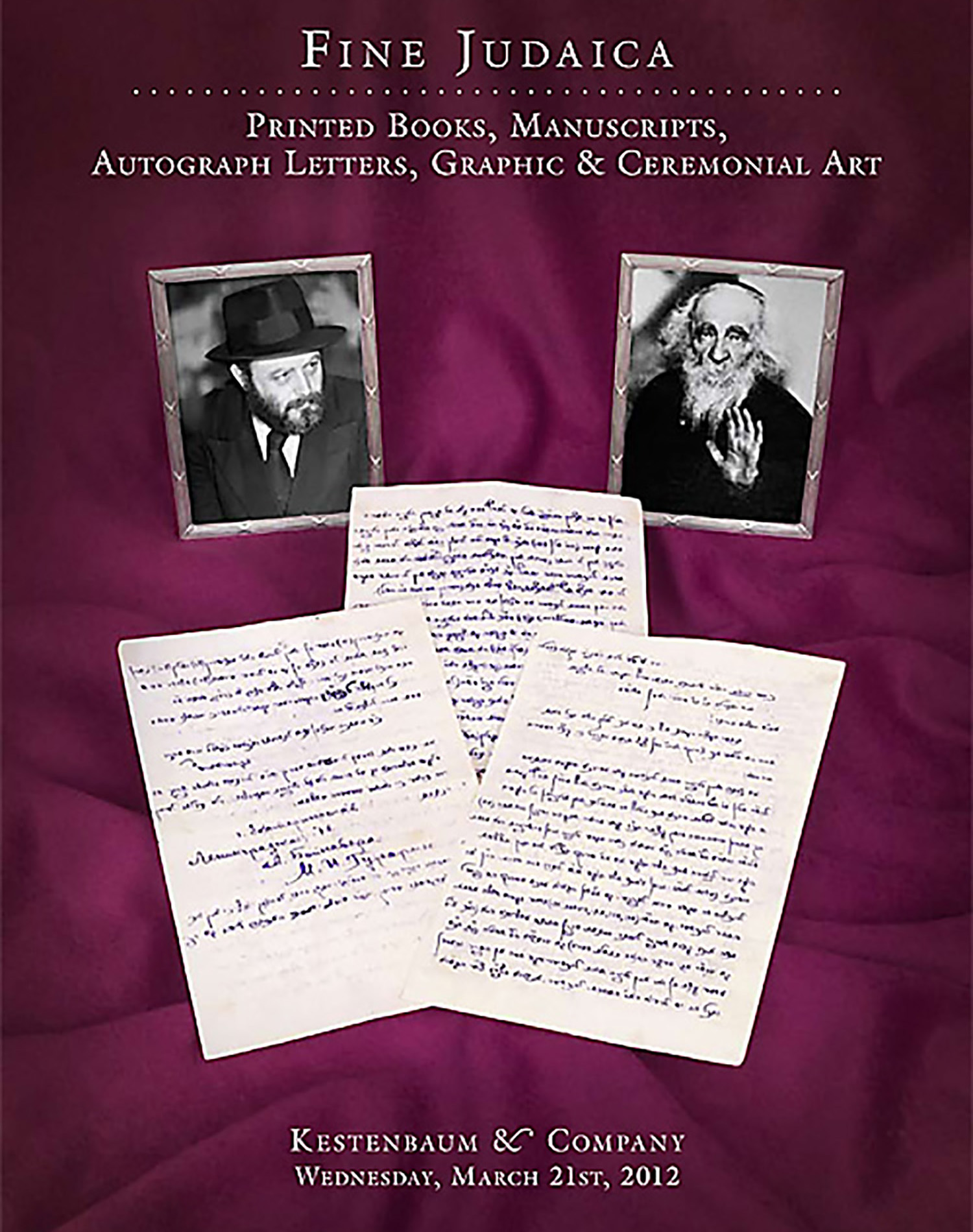Hilchoth HaRosh. Hebrew fragments from a 14th-century manuscript emanating from Spain.

AUCTION 54 |
Wednesday, March 21st,
2012 at 1:00
Fine Judaica: Printed Books, Manuscripts Autograph Letters, Graphic & Ceremonial Art
Lot 255
ASHER BEN JECHIEL.
Hilchoth HaRosh. Hebrew fragments from a 14th-century manuscript emanating from Spain.
Spain: 14th-century
Est: $4,000 - $6,000
PRICE REALIZED $3,500
Large fragments of eleven folios of a lost early codex of Asher ben Jechiel’s abstract of the legal conclusions of the Talmud. These pages deal with the second and third chapters of Tractate Mo’ed Katan and the third and fourth chapters of Tractate Megillah.
In spite of its great and lasting influence, Hilchot HaRosh is preserved in remarkably few medieval manuscript sources. Thus, Rabbenu Asher on Mo’ed Katan, for example, survives complete in just three manuscripts (at the British Library, Sephardic, 14th century; JTS, Sephardic, 15th century; and the Bibliotheque Nationale de France, Ashkenazic, 1460;) and in three fragments (Cairo Genizah, Cambridge, the State Archive in Cremona and the British Library).
Born in Germany, raised among the Hasidei Ashkenaz and trained in France, Asher ben Jechiel (ca. 1250-1327) was the protégé of Meir of Rothenburg, and succeeded him as chief religious authority of the Jews of the German-speaking lands. With his vast rabbinic erudition, marked halachic stringency, and strong opposition to secular study, he was thereafter welcomed in Spain by Solomon ben Adret of Barcelona, and became rabbi of Toledo in 1305, doing much by dint of his personal stature to introduce Ashkenazic traditions of scholarship and piety to Sepharad.
The Rosh’s literary legacy comprises his collected responsa, the ethical work Orchoth Chayim, his collection of Tosaphoth, studied in medieval Spain to the exclusion of all other versions, and, above all, his abstract of the laws of the Talmud, known variously as Sefer Asheri (or Oshri), Hilchoth HaRosh, Piske HaRosh, and, in most printings of the Talmud, called simply Rabbenu Asher. In this work, he reviews Isaac Alfasi’s abstract of the Talmud from a standpoint informed by the conclusions of the Tosaphists.
